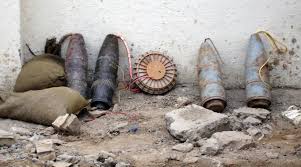Improvised Explosive Device:

J&K Police recently arrested seven locals linked to a terror module, seizing 2900 kg of IED-making materials and arms.
- An IED is a type of unconventional explosive weapon that can take any form and be activated in a variety of ways.
- IEDs are used by criminals, vandals, terrorists, suicide bombers, and insurgents.
- Because they are improvised, IEDs can come in many forms, ranging from a small pipe bomb to a sophisticated device capable of causing massive damage and loss of life.
- The extent of damage caused by an IED depends on its size, construction, and placement and whether it incorporates a high explosive or propellant.
- IEDs can be carried or delivered in a vehicle; carried, placed, or thrown by a person; delivered in a package; or concealed on the roadside.
- The term IED came into common usage during the Iraq War that began in 2003.
- IEDs are inexpensive and can be easily manufactured, concealed and detonated.
- Further, IEDs can be manufactured by using commonly available material or chemicals.
- It consists of a variety of components that include an initiator, switch, main charge, power source, and container.
- IEDs may be surrounded by or packed with additional materials or “enhancements” such as nails, glass, or metal fragments designed to increase the amount of shrapnel propelled by the explosion.
- An IED can be initiated by a variety of methods depending on the intended target.
- Many commonly available materials, such as fertilizer, gunpowder, and hydrogen peroxide, are used as explosive materials in IEDs.
- Explosives must contain a fuel and an oxidizer, which provides the oxygen needed to sustain the reaction.
- A common example is ANFO, a mixture of ammonium nitrate, which acts as the oxidizer, and fuel oil (the fuel source).




